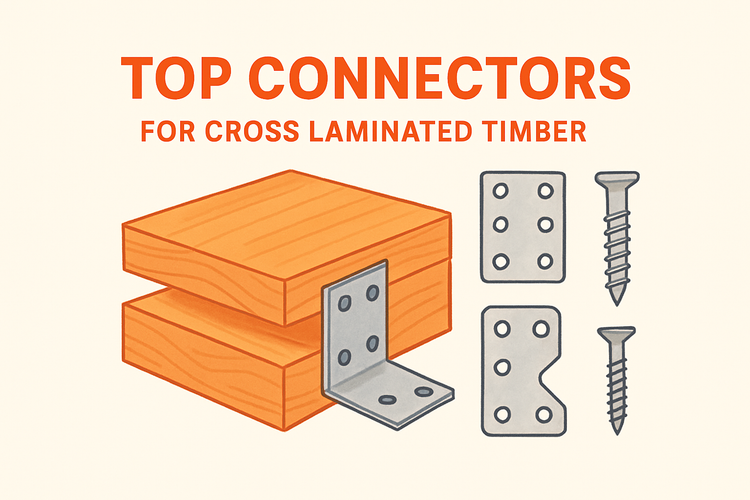Top Connectors For Cross Laminated Timber For Timber Projects

Overview of Top Connectors for Cross Laminated Timber
Top connectors play a pivotal role in ensuring the strength, alignment, and security of cross laminated timber (CLT) structures. These components are specifically designed to accommodate CLT's layered grain construction, providing sturdy links between large timber panels.
Due to the rising popularity of CLT in modern architecture, using proper connectors for cross laminated timber enhances structural rigidity and minimizes movement under dynamic loads.
Advantages of Using Specialized CLT Connectors
Not all timber connectors are equal when working with CLT systems. Specialized connectors are crucial as they cater to the unique multi-layered construct of CLT, preventing splits and distortion that can occur with traditional hardware.
Custom-engineered CLT connectors offer efficient transfer of axial, shear, and bending forces throughout the structure. These top connectors often come with pre-calculated load bearing capacities, ensuring simplified installation and reliable performance during load distribution. Additionally, their discreet design allows architects to retain visual aesthetics without compromising on function.
Designed in conjunction with modern timber engineering, many of these connectors undergo robust testing for seismic and wind resistance, aligning with current building code standards. Builders and contractors prefer them for both residential and commercial CLT projects because they enable faster project turnarounds without sacrificing safety.
Installation Techniques and Best Practices
Proper installation is key to realizing the benefits of top connectors in CLT construction. Selection of the right connector type depends on the connection position—floor-to-wall, wall-to-wall, or ceiling-to-wall assemblies—and each connection must be evaluated for axial and lateral load values to avoid over-stressing the timber panels.
Use of compatible fasteners, such as self-tapping screws or concealed bolts, is necessary to minimize installation errors. It’s important to align connector positioning with engineered layout plans and to pre-drill where necessary to avoid timber splitting, especially near cross-layer edges.
Tools like impact drivers or torque-limited screw guns help achieve the required tightness without damaging the timber. Some contractors pair specialist screws and nails with connectors for optimal joint integrity. Regular inspection throughout the build helps identify misalignments before layers are concealed by wall or ceiling interiors.
Integration with Other Timber Components
Top CLT connectors work seamlessly with various timber construction elements to create a cohesive and secure structure. When integrating CLT panels into hybrid builds, such as timber-steel or timber-masonry combinations, connectors designed for multi-material compatibility should be selected.
Additionally, angle brackets and joist hangers are often employed in CLT construction to provide lateral support and distribute vertical loads onto main beams or supporting walls. These components contribute significantly to maintaining alignment in large-span assemblies or multi-storey applications. Precision-cut brackets help avoid warping or sagging while allowing for minor deflection tolerance.
By carefully coordinating these timber accessories, professionals can construct buildings that are not only versatile in form but also resilient against environmental stresses.
Performance in Diverse Environments
Top connectors for CLT are tested to endure various environmental factors including temperature fluctuations, moisture exposure, and seismic activity. Premium models are coated with corrosion-resistant finishes to prolong life in outdoor or high-humidity environments.
Climate-resilient buildings not only depend on high-performance cladding and insulation but also on durable joinery components. In regions experiencing high winds or seismic tremors, the correct use of high wind ties & timber connectors alongside CLT-specific top connectors greatly enhances safety.
Custom solutions tailored according to regional performance demands are often chosen in public buildings, infrastructure projects, and offsite construction modules. Through product specifications and performance ratings, professionals can choose the appropriate connector systems to meet the design and operational conditions.
